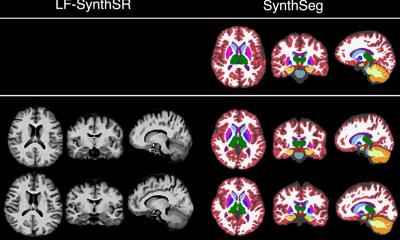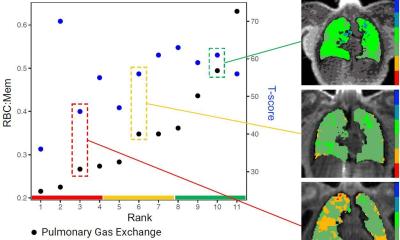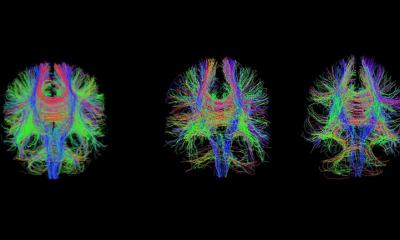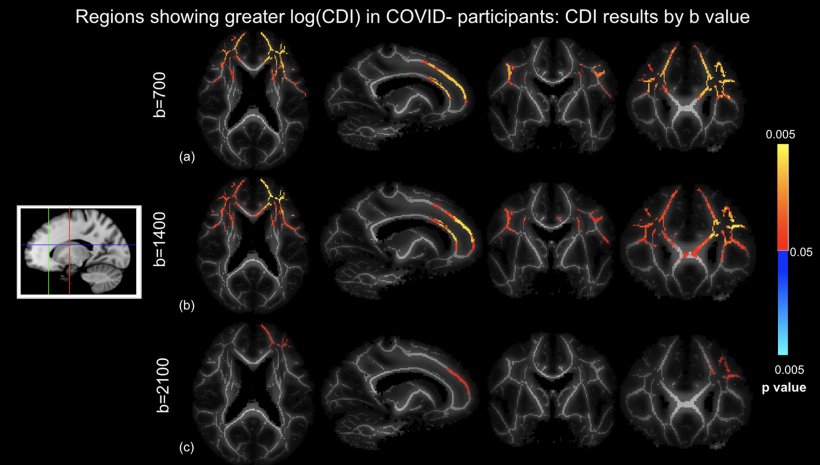
Image source: Teller et al., Human Brain Mapping 2023 (CC BY-NC-ND 4.0)
News • Diffusion-tensor and correlated diffusion imaging
New MRI technique captures Covid-19’s impact on the brain
An MRI invention from engineers at the University of Waterloo reveals better than many existing imaging technologies how Covid-19 can change the human brain.
The new imaging technique known as correlated diffusion imaging (CDI) was developed by systems design engineering professor Alexander Wong and recently used in a groundbreaking study by scientists at Baycrest’s Rotman Research Institute and Sunnybrook Hospital in Toronto. The study is published in the journal Human Brain Mapping.
“Some may think Covid-19 affects just the lungs,” Dr. Wong said. “What was found is that this new MRI technique that we created is very good at identifying changes to the brain due to Covid-19. Covid-19 changes the white matter in the brain.”
Wong, a Canada Research Chair in Artificial Intelligence and Medical Imaging, had previously developed CDI in a successful search for a better imaging measure for detecting cancer. CDI is a new form of MRI that can better highlight the differences in the way water molecules move in tissue by capturing and mixing MRI signals at different gradient pulse strengths and timings.
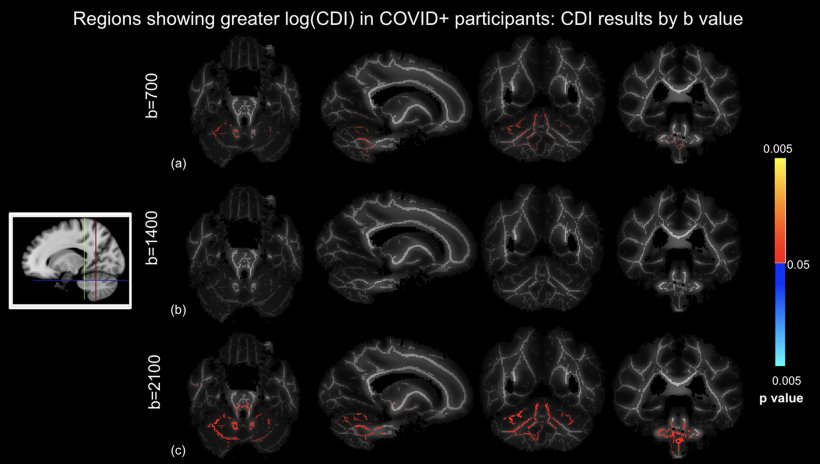
Image source: Teller et al., Human Brain Mapping 2023 (CC BY-NC-ND 4.0)
Researchers at Rotman, a world-renowned centre for the study of brain function, saw Wong’s imaging discovery and thought it could likely also be used to identify changes to the brain due to Covid-19. Subsequent tests proved that theory right. The CDI imaging of frontal-lobe white matter revealed a less restricted diffusion of water molecules in Covid-19 patients. At the same time, it showed a more restricted diffusion of water molecules in the cerebellum of patients with Covid-19.
Wong highlights that the two regions of the brain react differently to Covid-19 and points to two key findings from the research. First, the human cerebellum might be more vulnerable to Covid-19 infections. Second, the study reinforces the idea that Covid-19 infections can lead to changes in the brain.
That could just be the beginning for CDI as it might be used to understand degenerative processes in other diseases such as Alzheimer’s or to detect breast or prostate cancers
Alexander Wong
Not only is the Rotman study one of the few to have shown Covid-19’s effects on the brain, but it is the first to report diffusion abnormalities in the white matter of the cerebellum. Although the study was designed to show changes, rather than specific damage, to the brain from Covid-19, its final report does discuss potential sources of such changes and many link to disease and damage. In response, Wong suggests future tests could focus on whether Covid-19 actually damages brain tissue. Additional studies could also determine if Covid-19 can change the brain’s grey matter.
“Hopefully, this research can lead to better diagnoses and treatments for Covid-19 patients,” Wong said. “And that could just be the beginning for CDI as it might be used to understand degenerative processes in other diseases such as Alzheimer’s or to detect breast or prostate cancers.”
Source: University of Waterloo
18.06.2023



